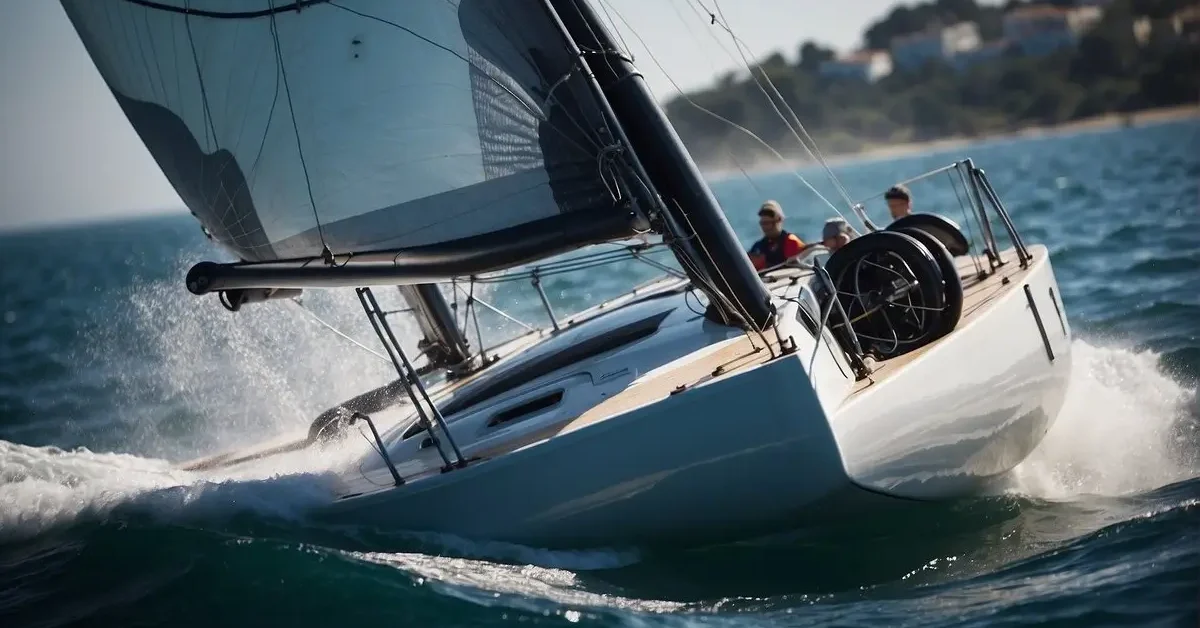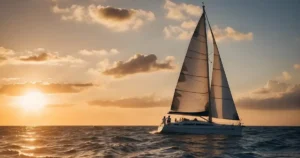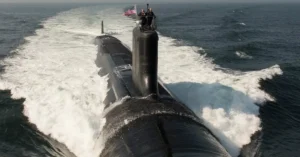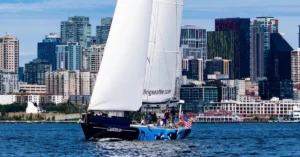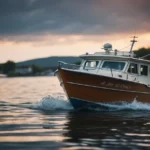When we think about sail boat racing, we’re immersing ourselves in a world where performance and precision meet the unpredictable nature of the wind and waves. Race sail boats are at the heart of this thrilling sport, designed to cut through water with astonishing speed and agility. Racing these vessels isn’t just about raw power; it’s a dance of strategy and skill, where the harmony between crew and craft is crucial for victory.
The allure of sail boat racing lies in the diversity of the vessels and the challenges they are crafted to meet. From sleek, high-speed craft built solely for racing to hybrids that balance competitive edge with cruising comfort, each race sail boat boasts features tuned for peak performance. Teams must master their craft’s unique characteristics and adapt to ever-changing conditions on the water.
As we sail into the deeper aspects of this sport, we’ll explore the intricacies of sail boat design and the adrenaline-fueled races that captivate sailors and spectators alike. Whether you’re a seasoned sailor or a landlubber curious about this competitive world, excitement awaits in every gust of wind and tactical maneuver on the racing course.
History and Evolution of Sail Boat Racing
When we think about the rich tapestry of maritime history, race sail boats stand out as both a sport of strategy and a testament to human ingenuity. Let’s chart the course through time, from the first regattas to the high-tech vessels that slice through the waves today.
The Birth of Yacht Racing
In 1720, we saw the formation of the first yacht club in Cork, Ireland. The Water Club of the Harbour of Cork held its inaugural regatta the same year it was founded, marking a crucial moment in the birth of yacht racing. This event set the sail for a global phenomenon, eventually reaching shores far beyond Ireland.
Iconic Races and Regattas
Fast forward to 1851, and we witness a pivotal race around England’s Isle of Wight, organized by the Royal Yacht Squadron. The New York Yacht Club’s schooner, America, clinched victory in this race, prompting the creation of the America’s Cup, one of sail boat racing’s most coveted trophies. Additional prestigious events like Cowes Week, which began in 1826, have become staples in the sail boat racing calendar, attracting sailors and spectators worldwide.
Advancements in Sail Boat Design
Our journey through sail boat racing would only be complete with acknowledging the leaps in design that have propelled the sport forward. The transition from wood to fiberglass in the mid-20th century marked a significant shift in sail boat construction, leading to faster and more durable race boats.
The design evolution didn’t stop there—the advent of races. One is the Vendée Globe, an around-the-world solo race that tests the limits of sailor and vessel, further spurring innovations in boat technology and design.
The Racing Sail Boat

When we think about a race sail boat, images of sleek, high-performance vessels skimming across the water’s surface often come to mind. These boats are designed for speed, combining advanced engineering with skillful sailing tactics to compete in various classes and conditions.
Understanding Boat Classes
Different classes of race sail boats exist, each with a set of rules that dictate size, build, and sail configurations. These classes ensure fair competition, ranging from small, one-person dinghies to grand yachts.
- LOA (Length Overall): This measurement is crucial across classes, impacting speed potential and strategy.
- Yachts: Typically larger with substantial sail areas.
- Performance: Defined by design, with hull shape and weight distribution playing pivotal roles.
Dinghies and Skiffs
- Dinghies: Ideal for solo or duo sailors, generally under 15 feet in LOA.Fast and agile with a planning hull.
- Requires tactical prowess and a physical sail-handling approach.
- Skiffs: A high-performance subset known for their speed. They are demanding athleticism and coordination from their crews.
Racer-Cruiser Sail Boats
Striking a balance between speed on the race course and comfort for leisure sailing are the racer-cruiser sail boats.
- Dual Purpose: These boats are built to perform well while racing yet are comfortable enough for cruising.
- LOA Variance: They range in length, accommodating crews of different sizes.
- Performance: A focus on speed does not sacrifice stability and safety onboard.
Sail Boat Racing Today

In today’s world, race sail boats have evolved, combining tradition and technology to create a thrilling global sport. High-speed competitions, collaborations between elite yacht clubs, and significant media and sponsorship involvement drive the sporting extravaganza forward.
Popular Global Competitions
Rolex Sydney Hobart Yacht Race: The 66-foot racing yacht Alive triumphed again, marking a noteworthy win in this iconic event that stands out among sail boat races.
- SailGP: The SailGP series is redefining the sport with cutting-edge F50 catamarans. It has gained international recognition for its high-octane races, where sailing teams vie for impressive speeds on the water. Visit the SailGP website for the latest updates and event highlights.
- Volvo Ocean Race: A test of endurance, skill, and teamwork, this event draws all eyes as crews navigate some of the most treacherous seas in a round-the-world race.
- America’s Cup: With a legacy dating back to 1851, America’s Cup remains the pinnacle of yachting excellence, showcasing high-performance sail boats and unparalleled sailing skills. Learn more from the official America’s Cup website.
Do you want to know more about different Sail Boat Races and our Top 5 Sail Boat Races in the World? Then check out our article about the most favorite sailboat events!
Yacht Clubs and Sailing Leagues
Yacht Clubs are the heart of sailing communities, fostering talent and hosting regattas. For example:
- The New York Yacht Club
- Royal Yacht Squadron
Sailing Leagues: Often organized and supported by these yacht clubs, they provide platforms for sailors to compete on regional, national, and international stages.
The Role of Sponsorship and Media
Sponsorships: Brands align with sail boat racing to gain visibility and connect with an exclusive audience. Sponsorships can often be the lifeblood that sustains the competitive scene.
Media: It has transformed how we consume sail boat racing, with events like the Olympics elevating the sport’s profile. Comprehensive coverage and real-time news updates keep sailing enthusiasts informed and engaged.
In summary, the world of race sail boats offers various competitions supported by esteemed yacht clubs and enhanced through strategic sponsorships and media coverage. It’s an ever-evolving sport that continues to captivate and inspire.
Sailing Skills and Tactics

In race sail boat competitions, success hinges on mastering a blend of technical skills and cunning tactics. Let’s explore how we can elevate our game on the water.
Fundamentals of Sail Boat Racing
Our first step is to grasp the core principles. Racing sail boats requires understanding our vessel’s dynamics and competition rules. We focus on:
- Boat Handling: Efficient tacking, jibing, and boat speed control.
- Rules Knowledge: Familiarity with the Racing Rules of Sailing to avoid penalties and capitalize on opportunities.
Navigating the Course
Successful navigation isn’t just about steering; it involves strategic decision-making. To effectively navigate the course, we consider:
- Starting Strategy: Timing our start and choosing the correct position are pivotal, as an effective start can set the tone for the race.
- Mark Rounding: Deciding when to tack and jibe to maintain speed and optimal positioning.
Weather and Environmental Factors
Being attuned to environmental conditions is part of our tactical arsenal. To use the weather to our advantage, we:
- Wind Shifts: Use lifts and headers to make strategic gains—for example, jibe when lifted away from the mark to gain a better angle.
- Current and Tide: Anticipate changes and adjust our tactics for optimal course management.
Our Opinion on Race Sail Boats

We are convinced that Race Sail Boats embody the essence of sailing competition, demanding skill and strategy. We’re captivated by the sport’s evolution, from classic regattas to modern high-tech races.
It’s a blend of tradition and innovation that inspires and excites us. Golden Globe Race exemplifies this with its nod to historical sailing while challenging sailors to forego modern technology.
FAQ – Race Sail Boat

In the following Section, we have compiled and listed the most frequently asked questions for you. Feel free to comment and let us know if you miss something. We are always happy to receive feedback from you.
What are the tips for race sail boats?
Sail Fast. You can sail fast toward the finish, but often, if you sail just a little high or low of the rhumb line, you go much faster. Sailing 10 degrees off course increases sailing distance by less than 2% and will often make you much faster.
How do sail boat races work?
Race Sail Boats are scored based on their finishing position (1 point for 1st place, 2 for 2nd place, 3 for 3rd, etc.). The sail boat with the lowest score after a series of races is the winner. Team Racing – Two teams of 3 sail boats compete head-to-head.
What sailing boat is often used for racing?
All sorts of sailing craft are used for these races, including keel-boats of all sizes and dinghies, trailer sailors, catamarans, skiffs, sailboards, and other small craft. This kind of race is most commonly run over one or more laps of a triangular course marked by a number of buoys.
What is the rule 1 in sailing?
When you are on the same tack as the other boat, the leeward boat has the right-of-way. Rule 2: When you are on opposite tacks, the starboard tack boat has the right-of-way. Rule 3: If you are overtaking the other boat, or it is overtaking you, the boat ahead (the overtaken boat) has the right-of-way.
Comments ahoy! Dive into the sea of discussions by sharing your Race Sail Boat Story, anecdotes, or questions in the comments below. The water’s fine, join us!

